Not far from the busy streets and lantern-lined alleys of Chiang Mai’s Old City, Cocoon sits like a world apart. Driving out toward the countryside, you begin to notice the shift: the traffic fades, the sky opens, and rice fields replace shopfronts. What awaits at Cocoon is not just another spa, but a space deliberately designed as a sanctuary.
The grounds spread out like an oasis, with curved earthen buildings rising up from the grass like sculptures rather than structures, their shapes echoing the rhythms of nature itself. The domes, circular huts, and open-air pavilions are made of natural materials—clay, bamboo, and stone—and the design language is one of sacred geometry. Nothing feels square or rigid here. Instead, everything curves, spirals, and arcs, as if the architecture were breathing alongside the people who gather within it.
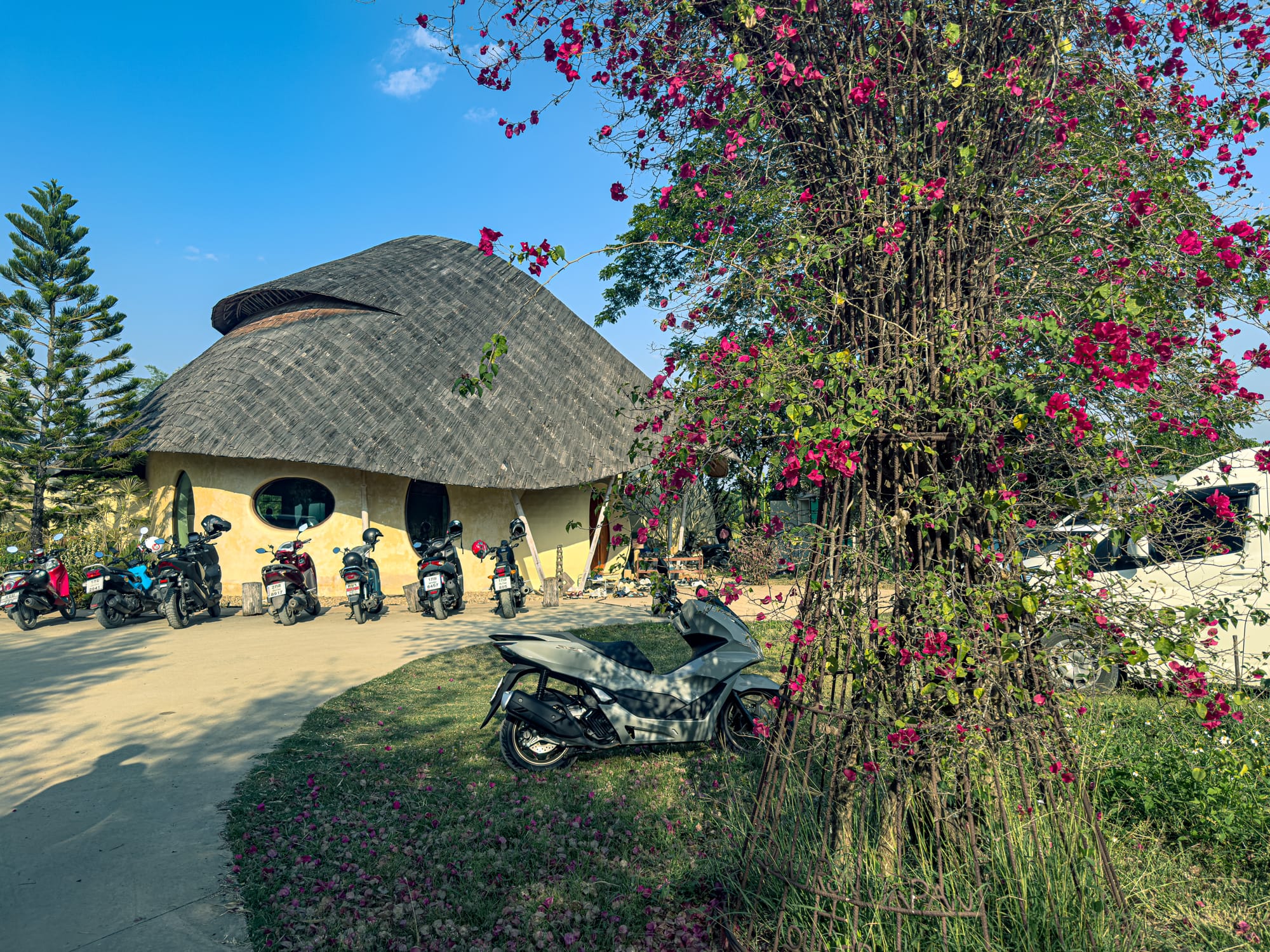
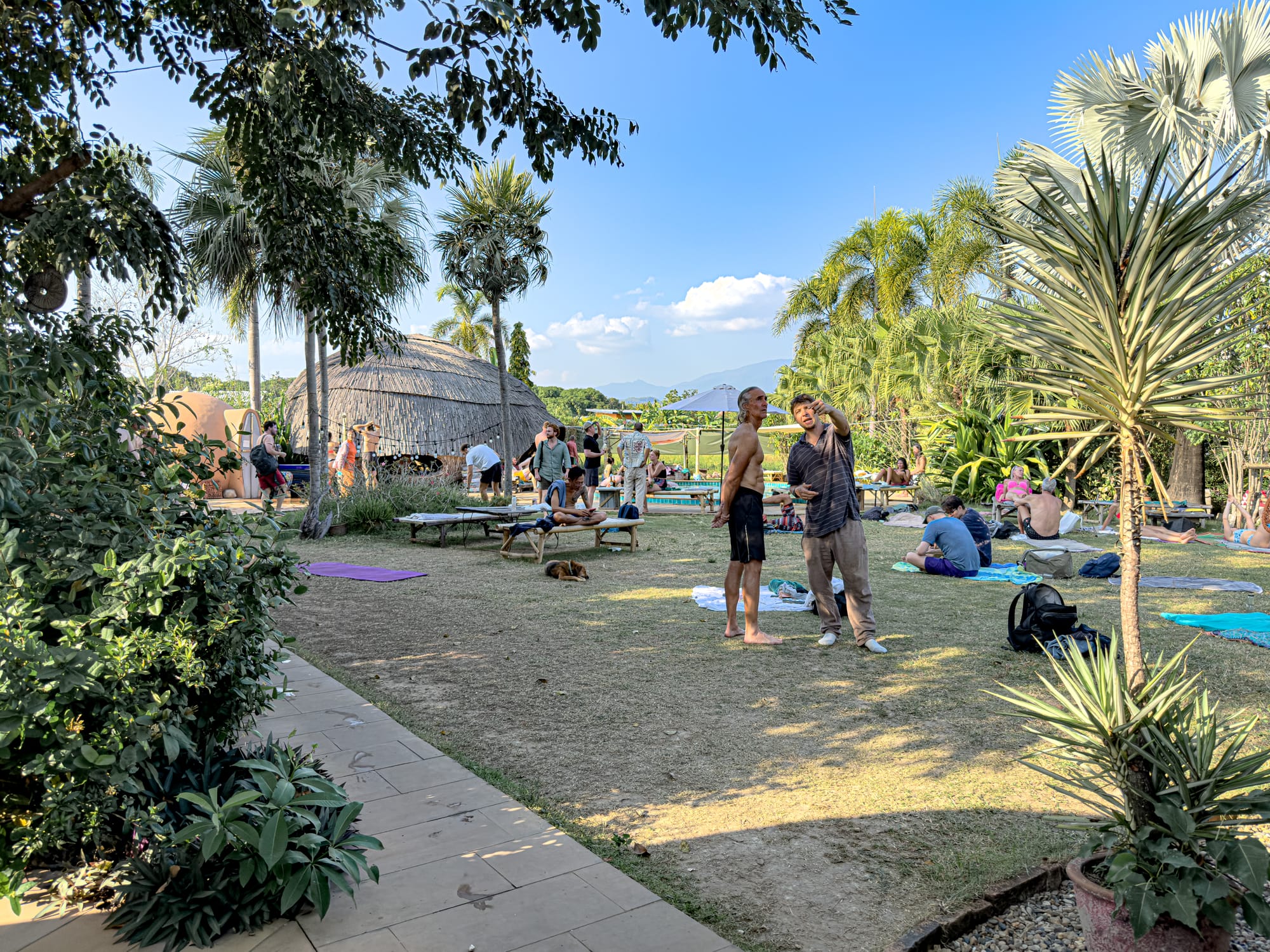
Natural curves and vibrant gardens frame Cocoon, where unique domes and open spaces create a serene setting for wellness
The moment you arrive, you sense that this place was created with intention. It is not glossy or polished, but rooted, organic, and deeply atmospheric. The air smells faintly of herbs and smoke, the light filters through bamboo lattices, and the soundscape is a mix of birdsong, water, and laughter drifting across the lawns. It feels both timeless and immediate, a place that sits outside of the rush of schedules and into something closer to ritual.
Rituals of heat, cold, and water
The heart of Cocoon is in its elemental offerings—fire, water, steam, and stone combining to reset the body and quiet the mind. The herbal steam room is perhaps the most distinctive experience. Unlike conventional steam rooms that pipe in artificial scents, here fresh herbs are gathered directly from the property. Lemongrass, galangal, kaffir lime leaves, and other Thai botanicals are placed into the chamber, their oils released into the mist. When you sit inside, the aroma is alive. It is not a single note but a chorus of scents, sometimes citrus-bright, sometimes earthy, sometimes sharp and clearing. It is an immersion into the land itself, as though the countryside around you has been distilled into vapor.
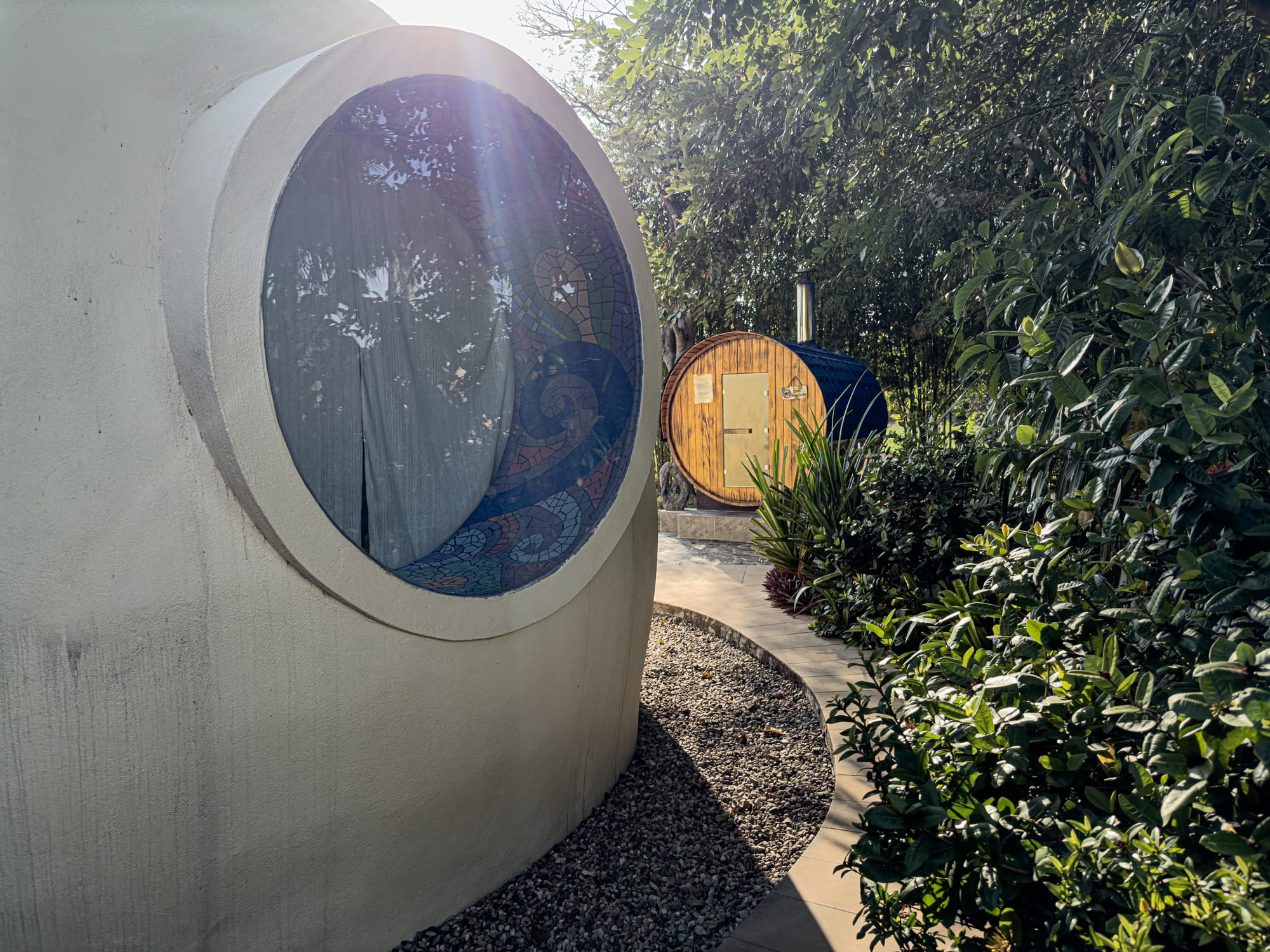
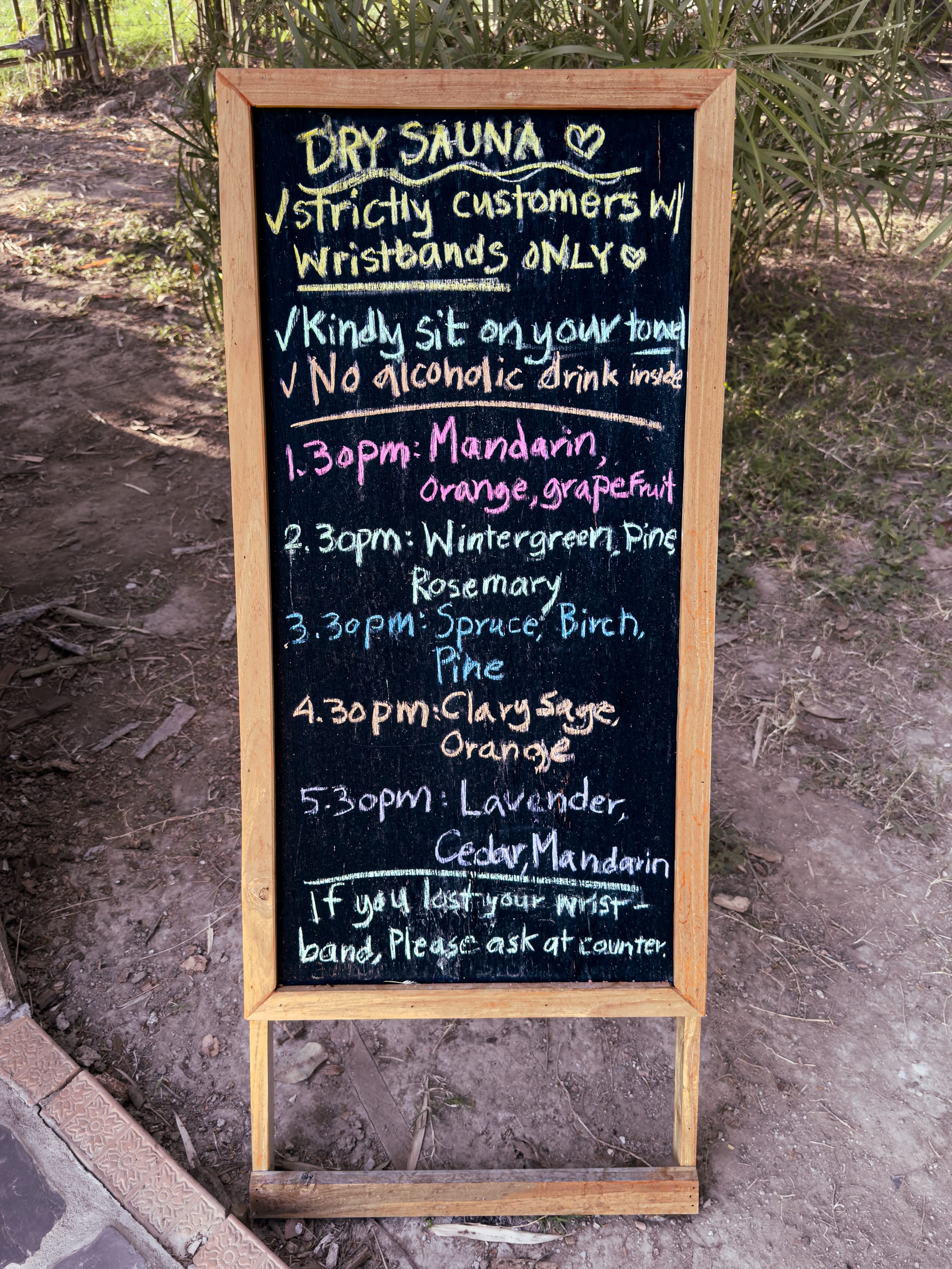
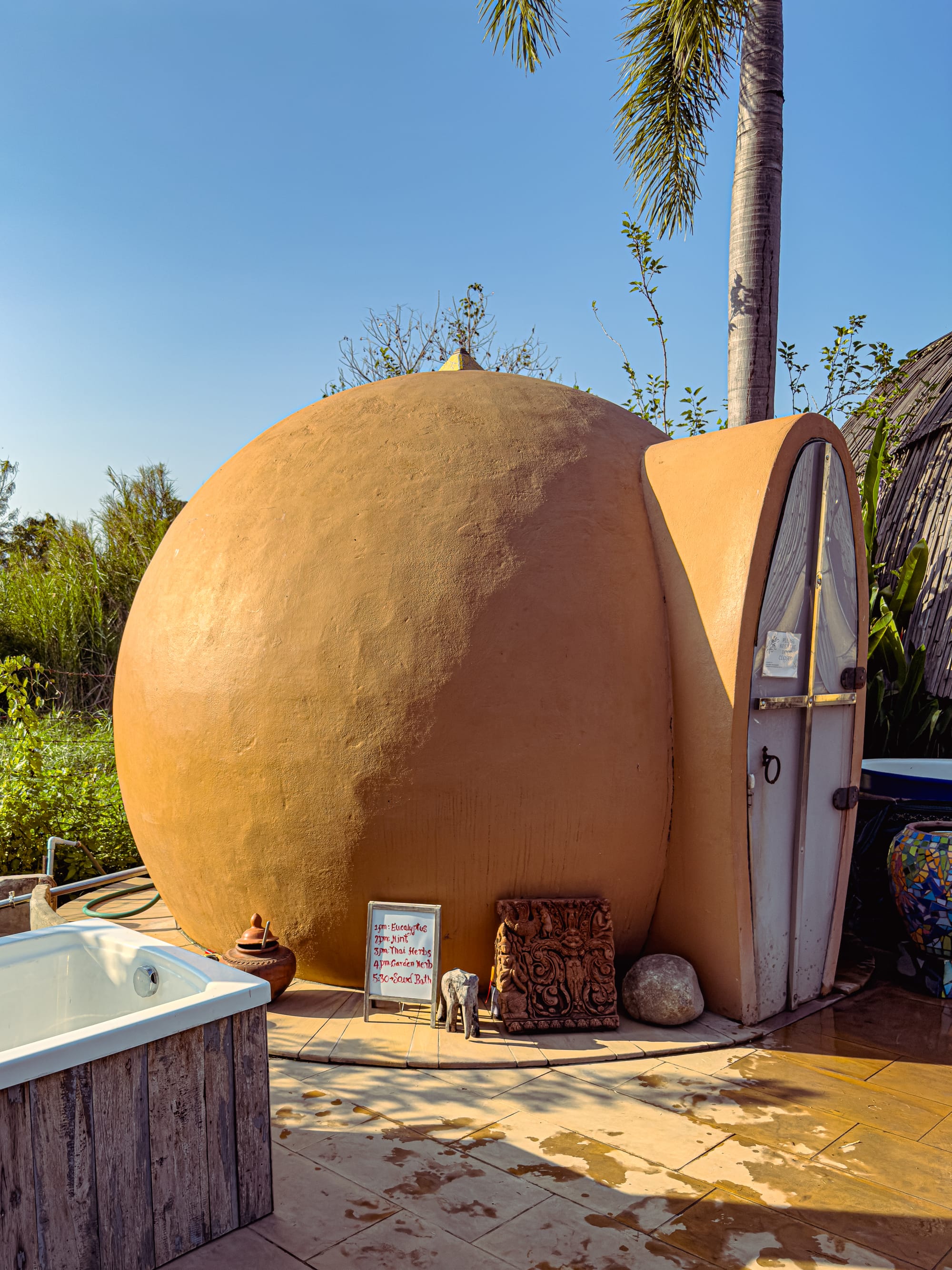
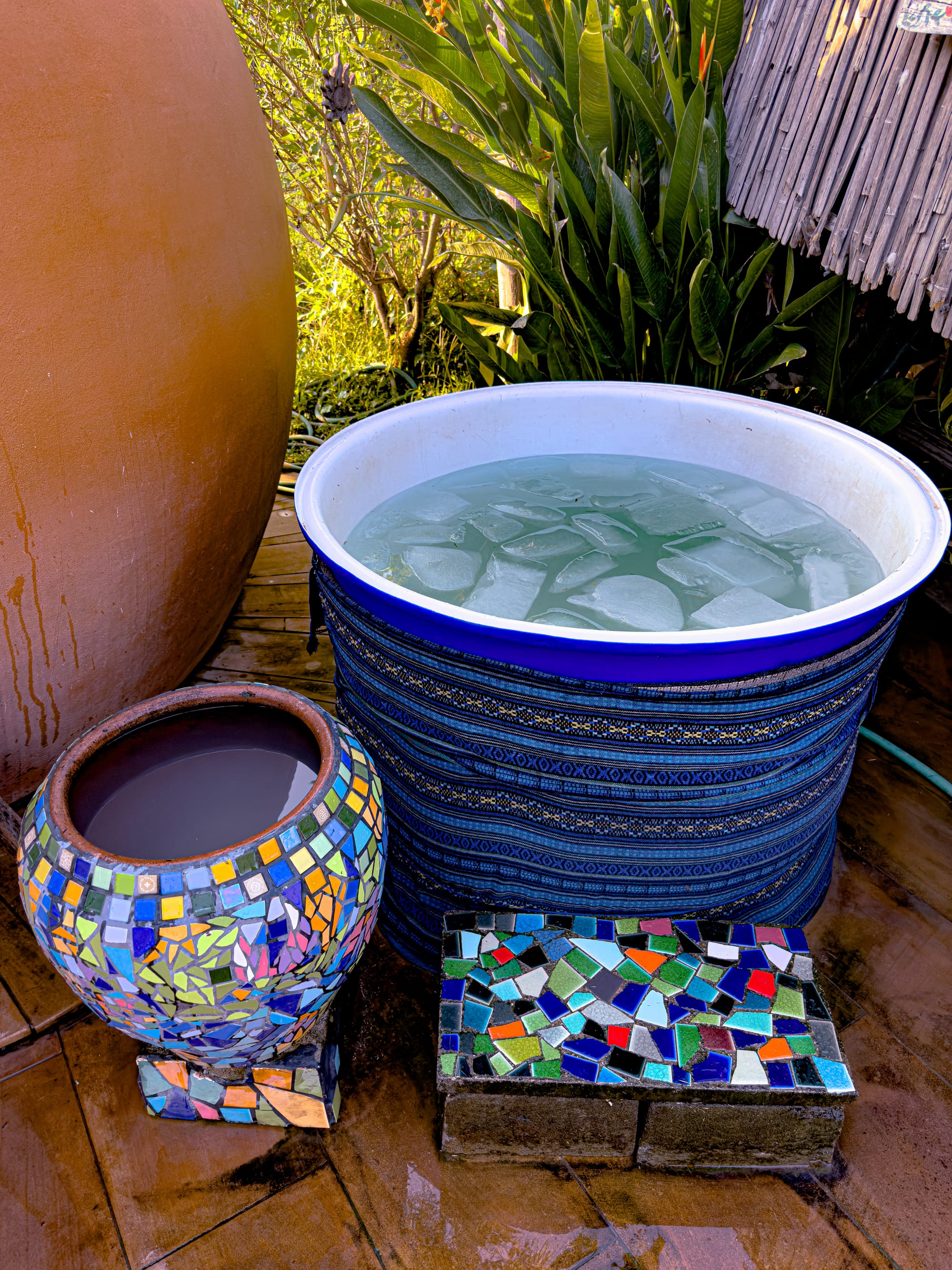
Cocoon’s sacred-geometry domes, herbal steam schedule, and refreshing ice baths create a holistic wellness atmosphere
From the steam, you move into contrast. The ice baths, set in stone basins, demand a plunge that is both shocking and exhilarating. The first breath is always ragged, but soon a steadiness arrives, your skin alight, your awareness sharpened. Just steps away, the sauna offers a return to heat, its wooden walls glowing with warmth. This rhythm—heat, cold, heat again—becomes a meditation in its own right, a cycle of surrender and awakening.
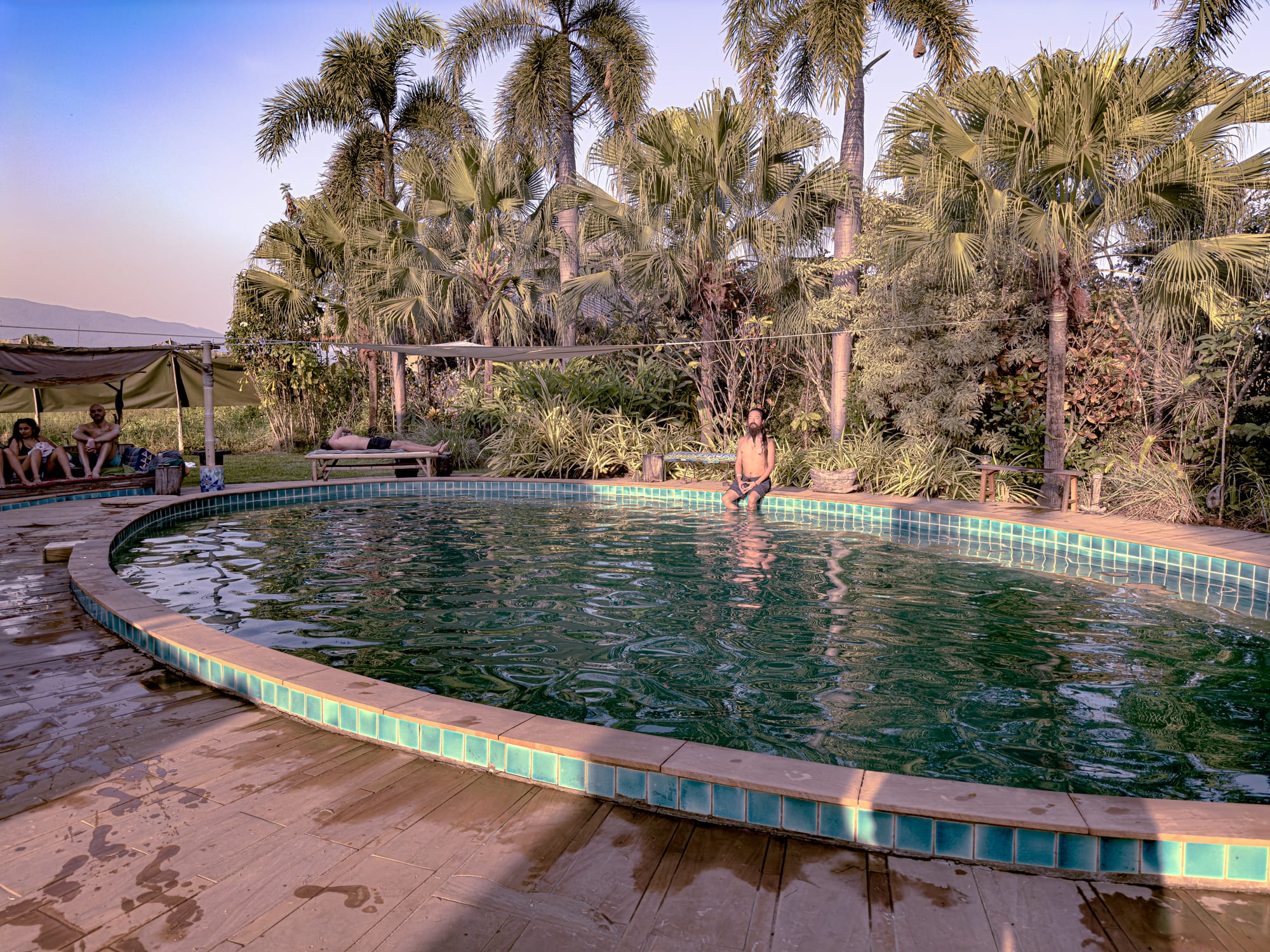
Beyond these rituals is the saltwater pool. It shimmers beneath the palms, its surface mirroring the sky. Floating in it, you feel the gentle lift of the mineral water, less harsh than chlorine, more forgiving. It is as much a place to socialize as it is to reflect, with guests gathering at the edge to sip tea or leaning back into the stillness of the water, eyes closed against the sun.
Community pulse: firelight and connection
Though Cocoon is built on architecture and ritual, its atmosphere is shaped just as much by the people who gather there. It attracts a certain kind of crowd: seekers, travelers, creatives, and locals who value slowing down.
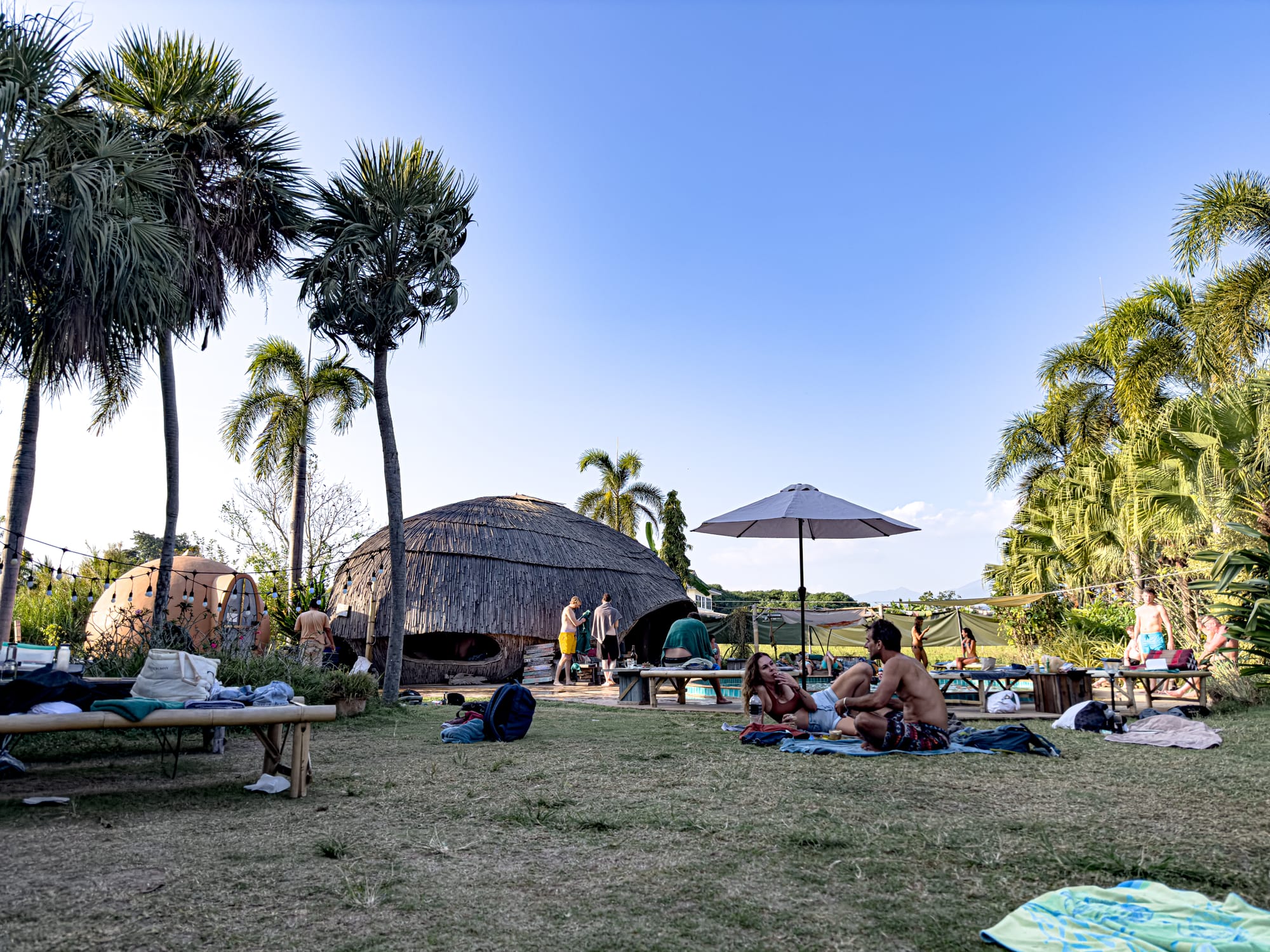
As the day stretches toward evening, the energy shifts. Lights flicker on, fires are lit, and the grounds take on a communal glow. One of the most memorable moments comes when a bonfire is set at the center of the yard. Tea is brewed from fresh herbs and passed around in steaming cups. Conversations ripple outward, sometimes quiet, sometimes animated, but always unforced. There is a sense that everyone has come here for the same thing: not entertainment, but restoration, connection, and a kind of collective exhale.
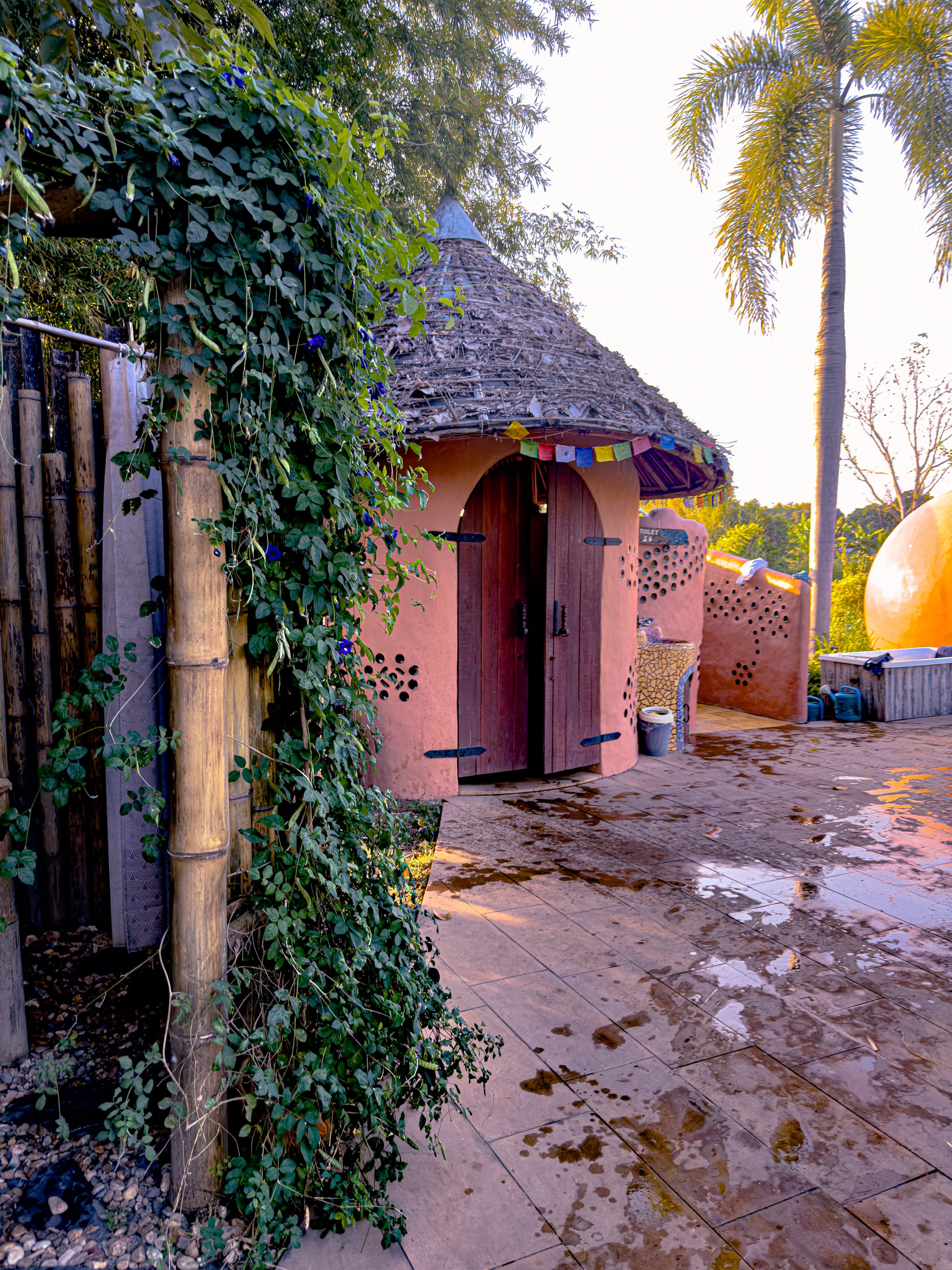
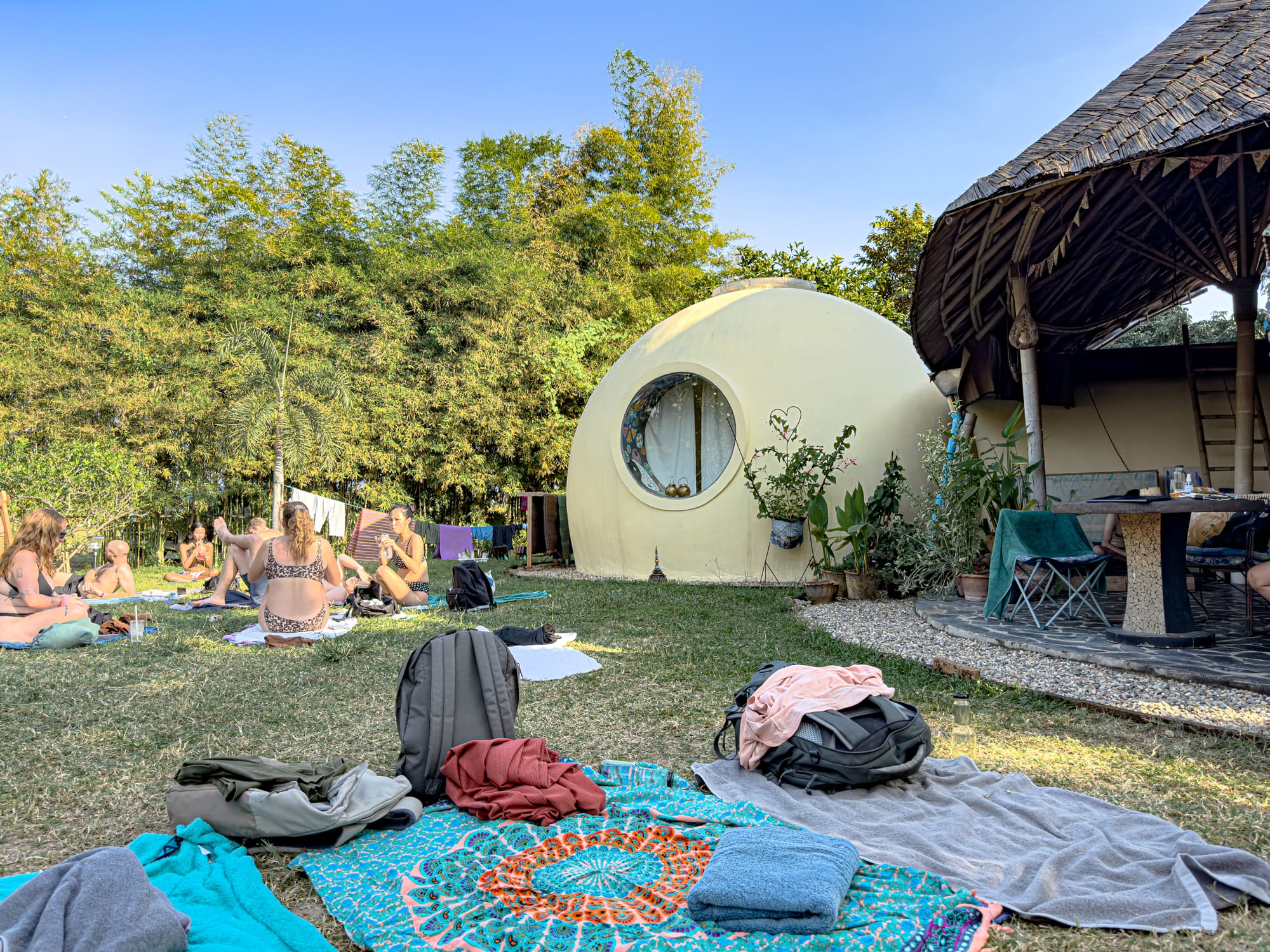
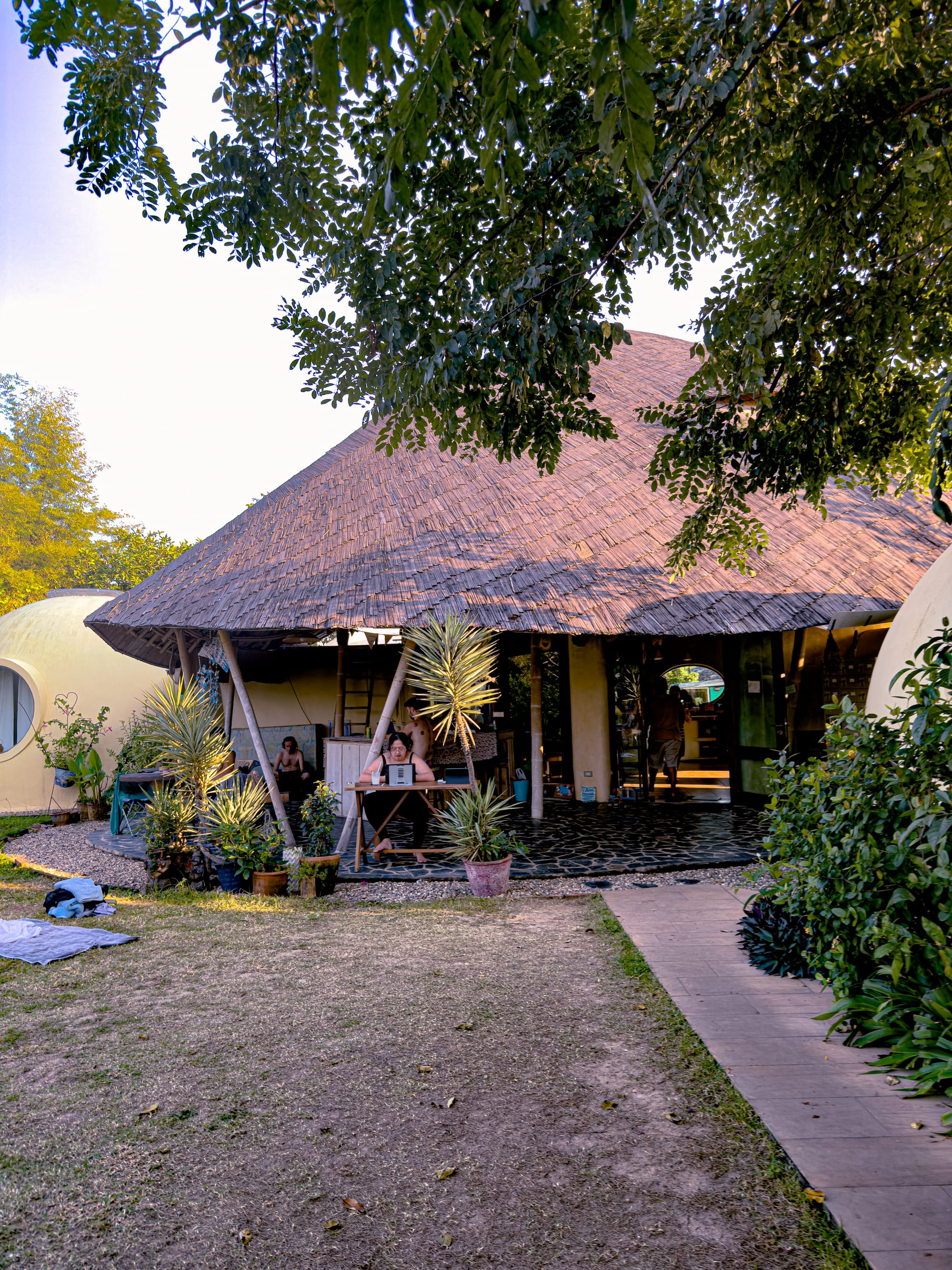
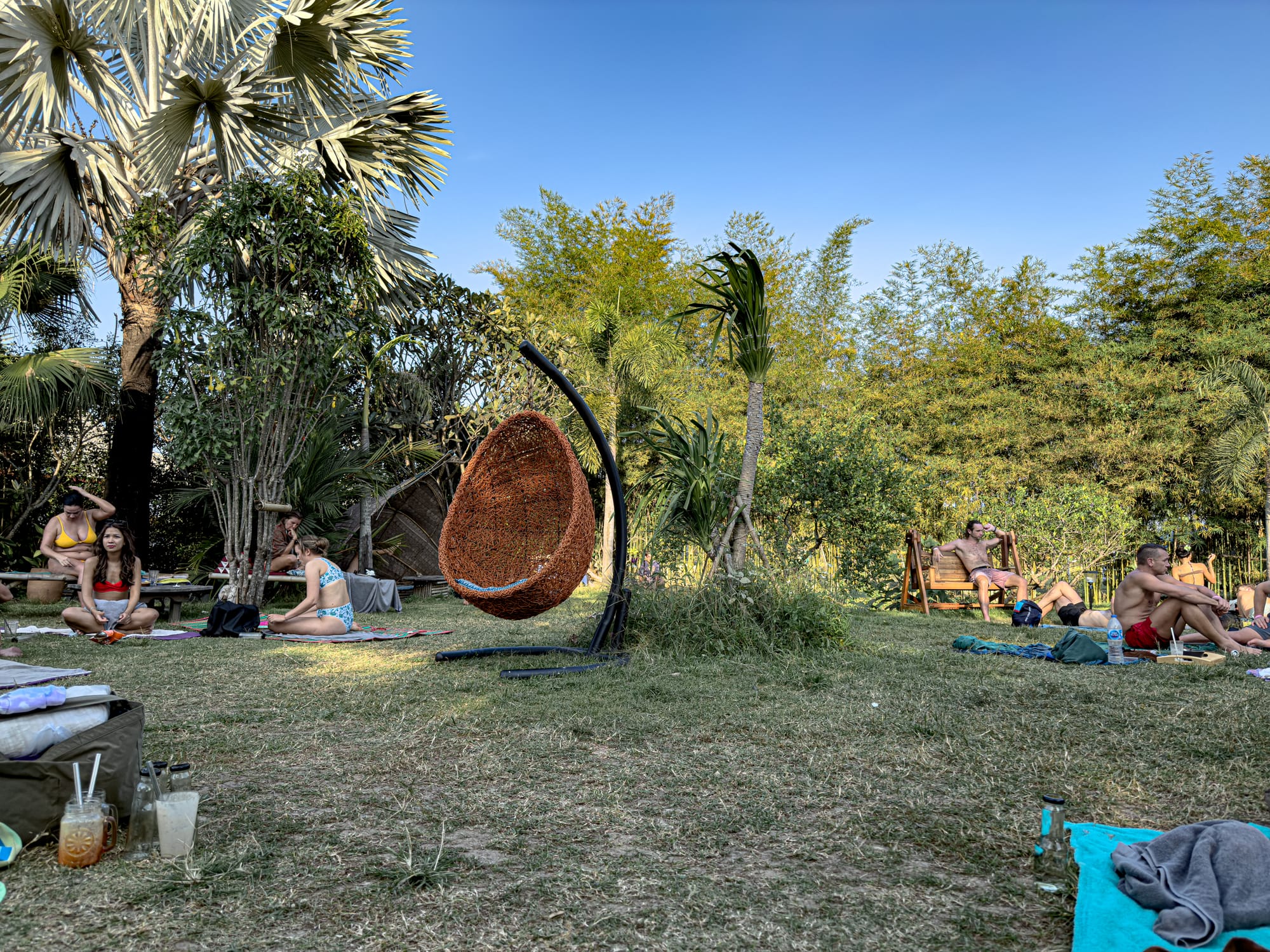
Cocoon’s grounds invite relaxation
It is not unusual for live music or drumming to appear, for yoga mats to be unfurled on the grass, or for groups of strangers to find themselves sharing stories by the fire. This is what makes Cocoon feel less like a spa and more like a gathering place. It is where rituals of wellness and rituals of community meet.
Architecture and atmosphere
The architecture at Cocoon deserves its own meditation. It is not just the backdrop to the experience but an active participant in it. The buildings seem to rise organically from the land, as if shaped by wind and water rather than human hands. Walls are rounded, doorways are circular, ceilings ripple with bamboo lattices arranged like mandalas. Sacred geometry is not a design flourish here; it is the guiding principle. You feel it when you walk into a dome and notice the way sound shifts, or when you look up and see the spiraling pattern of the roof echoing a flower or a seashell.
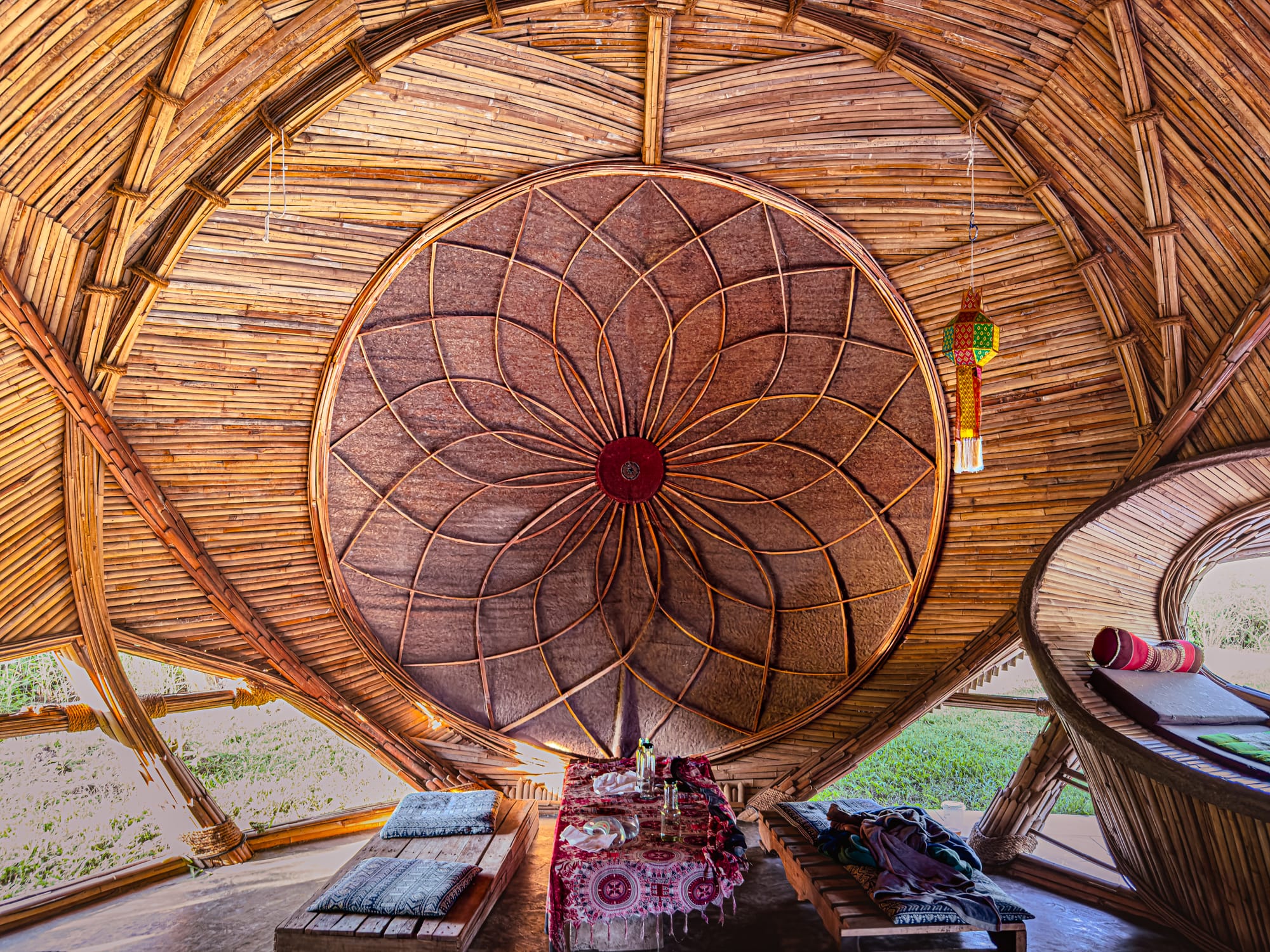
Materials are natural, tactile, and grounding. Clay plaster gives the walls a softness, bamboo beams arch overhead like living ribs, stone floors cool the feet.
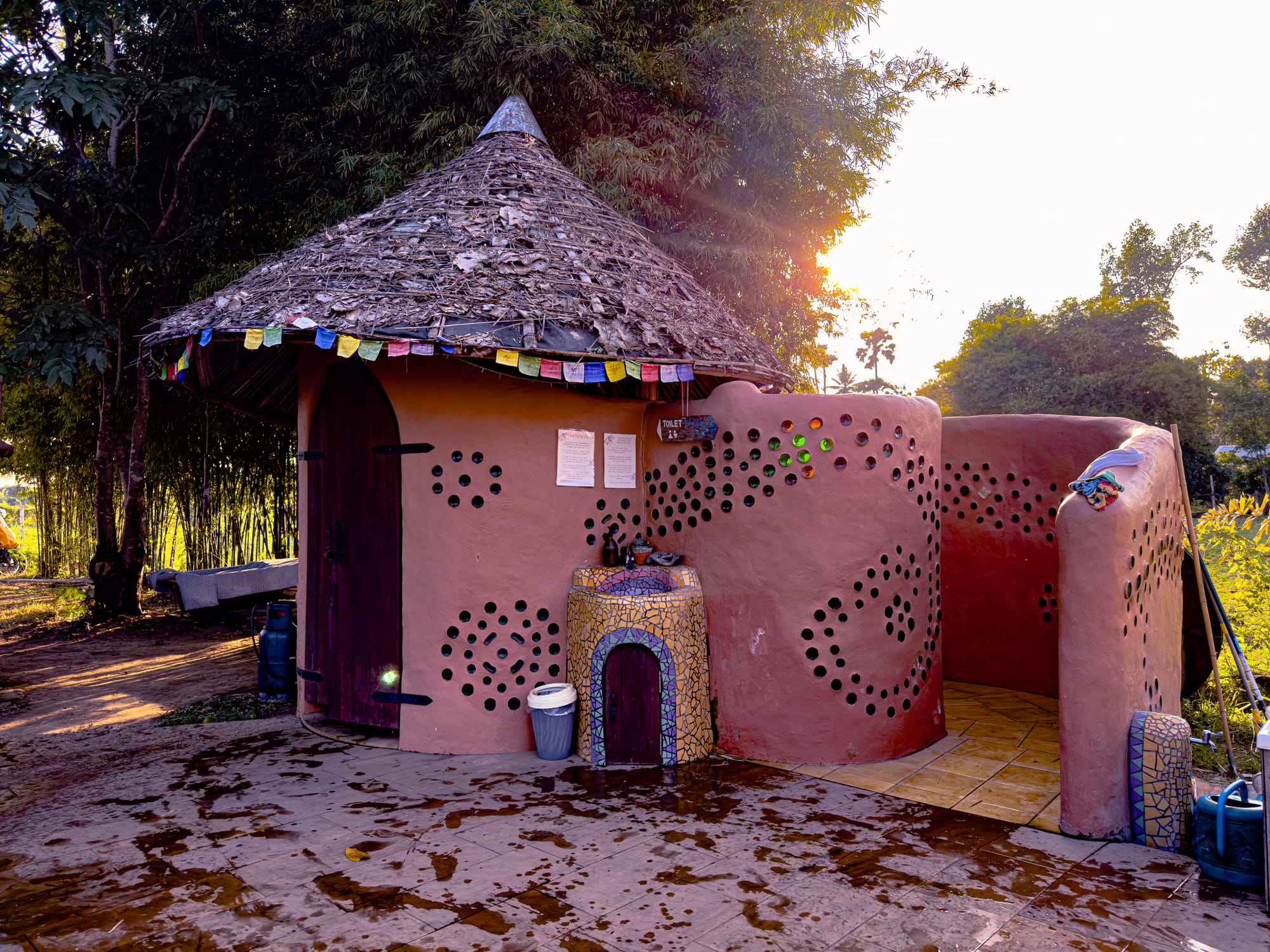
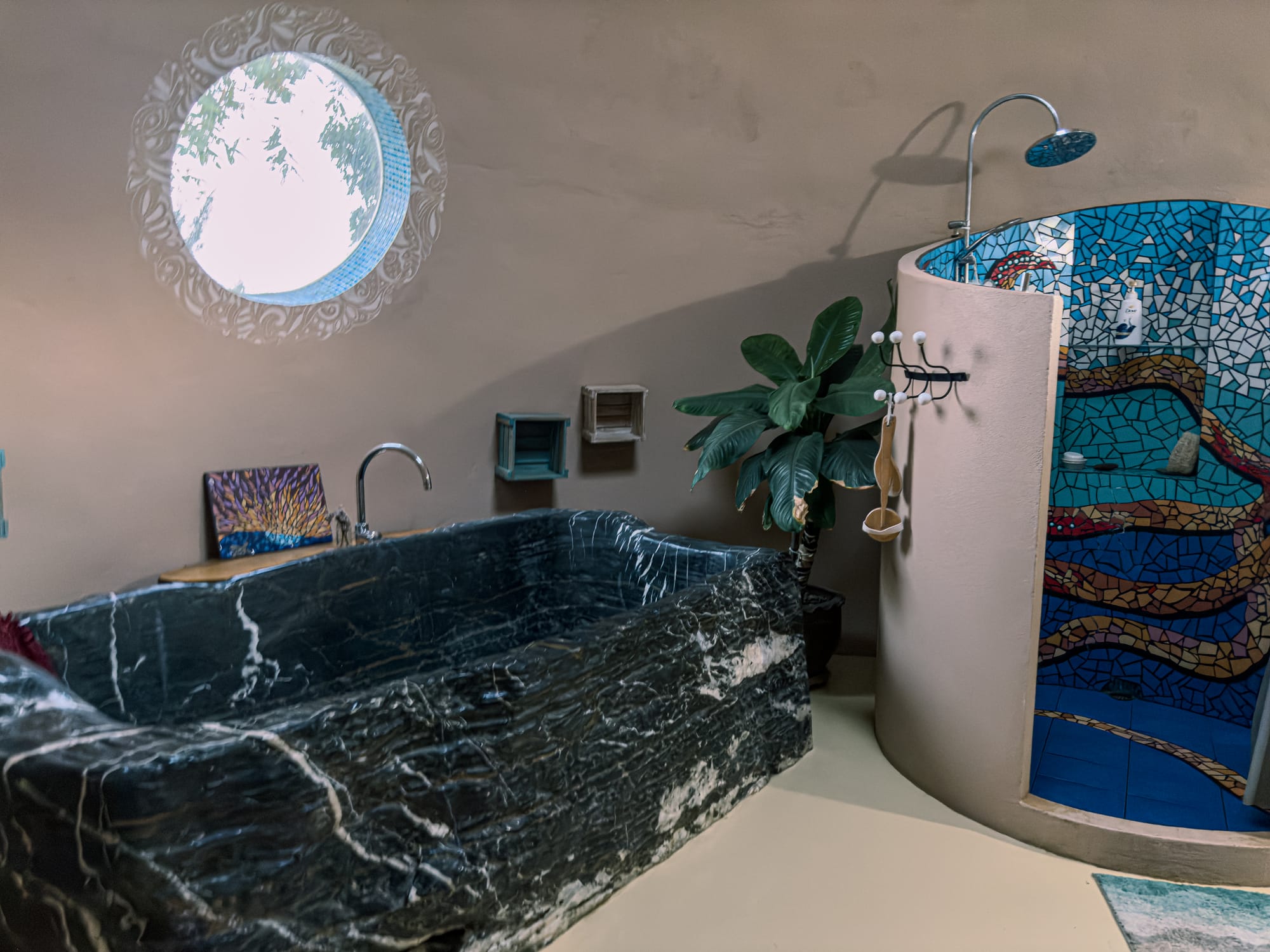
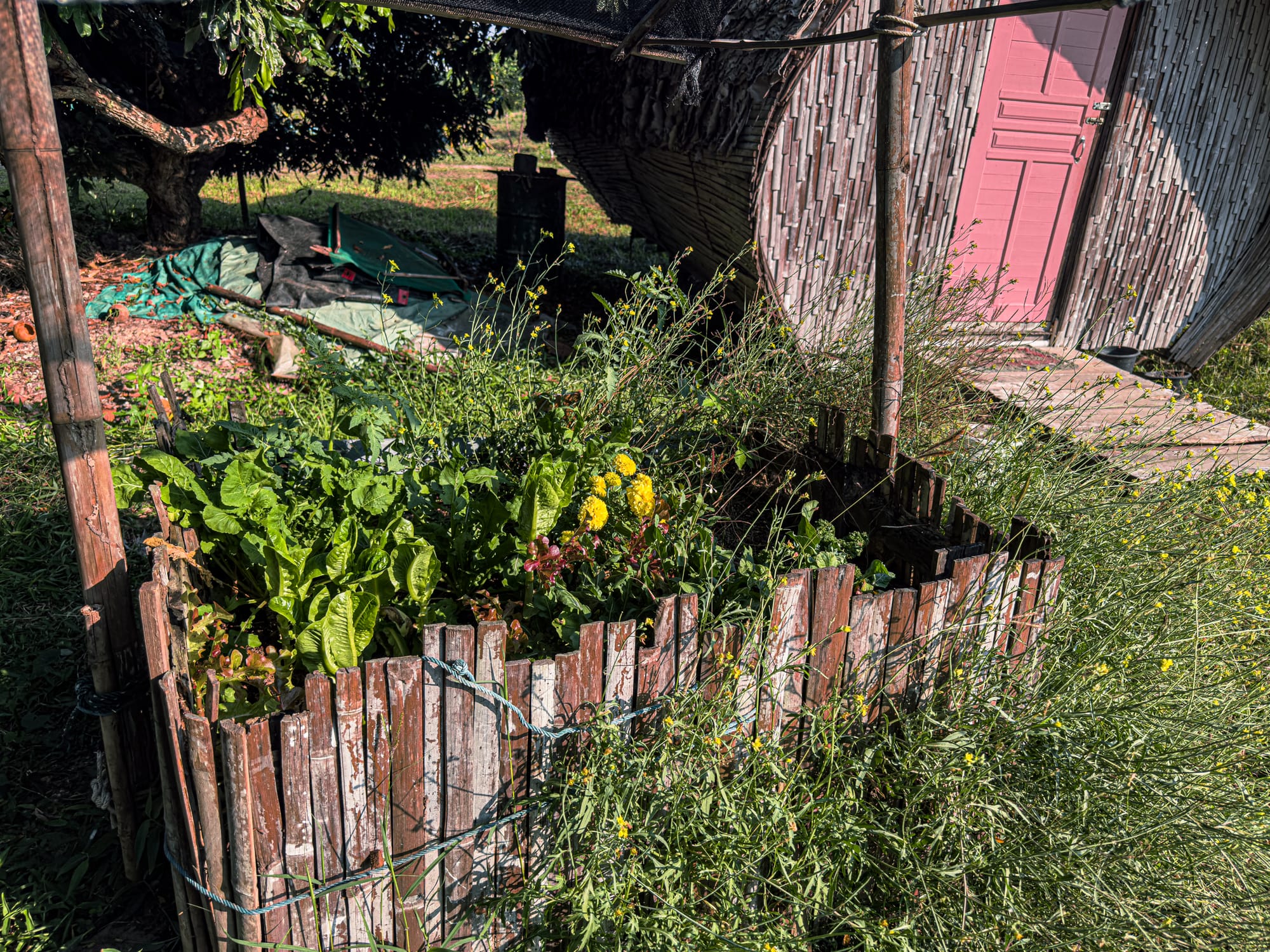
A glimpse of Cocoon’s thoughtful design
The structures breathe with the seasons, their imperfections part of their charm. This commitment to organic building materials makes the place feel less constructed and more grown, as though the architecture were a crop cultivated alongside the herbs and trees.
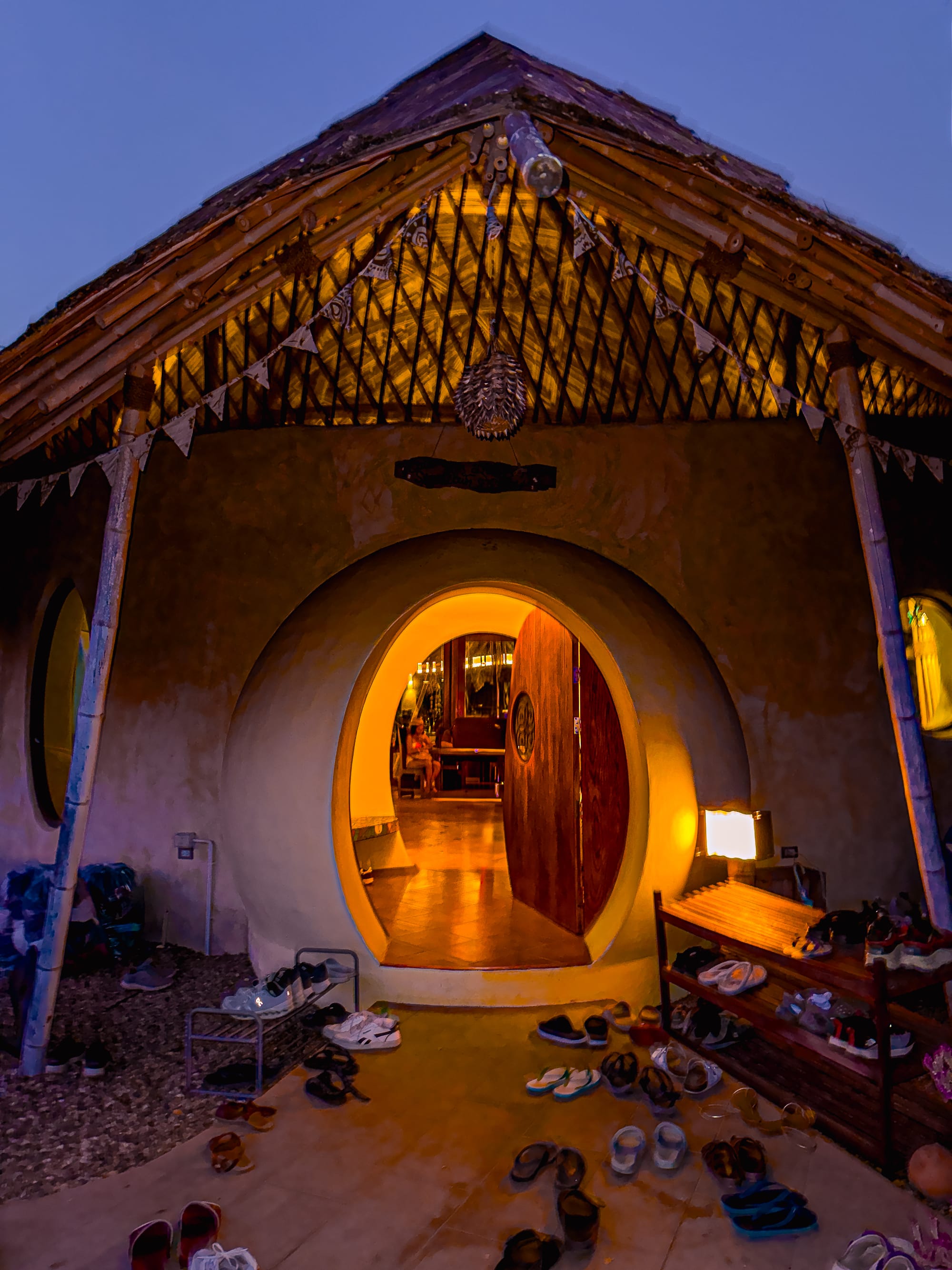
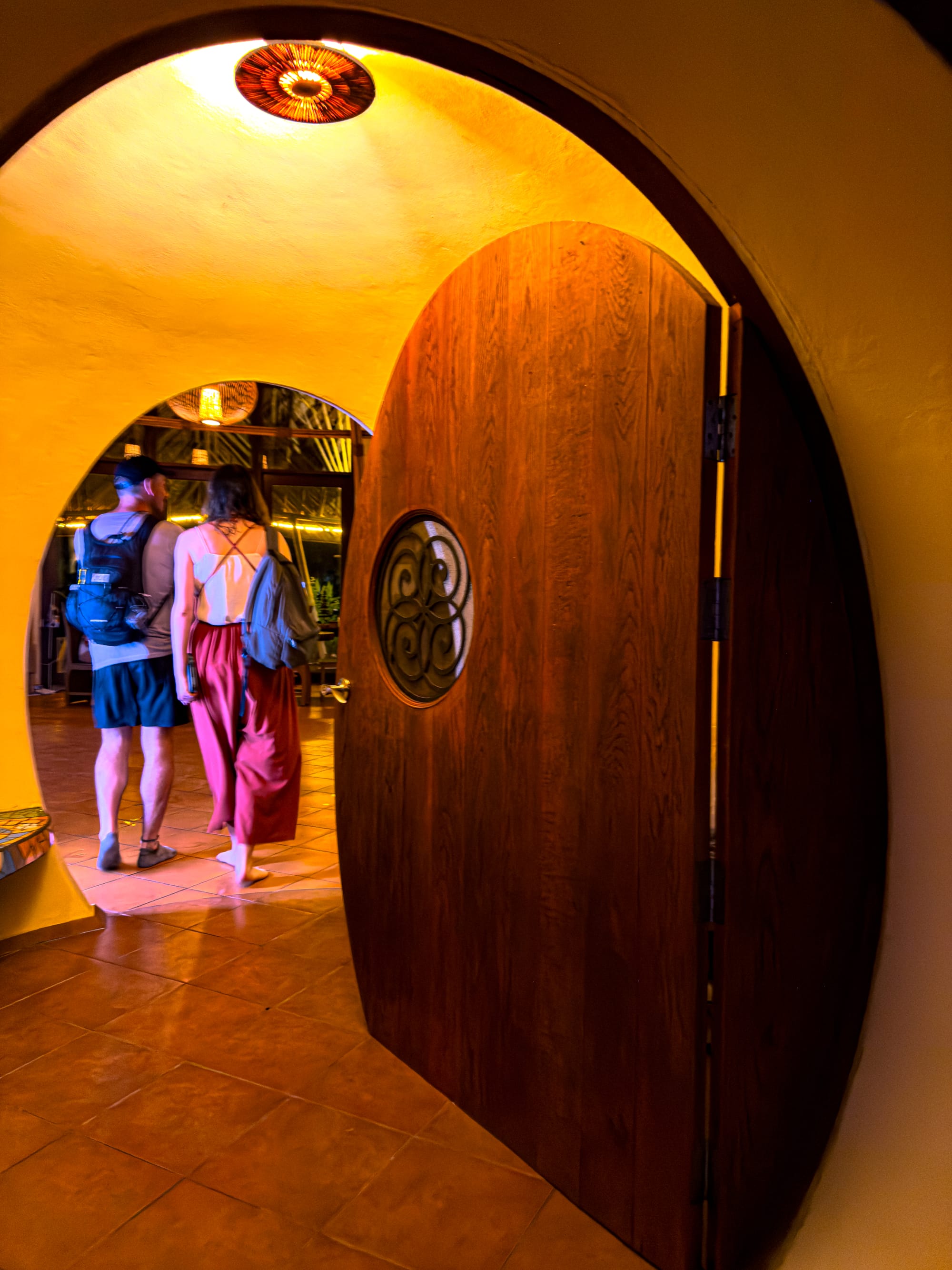
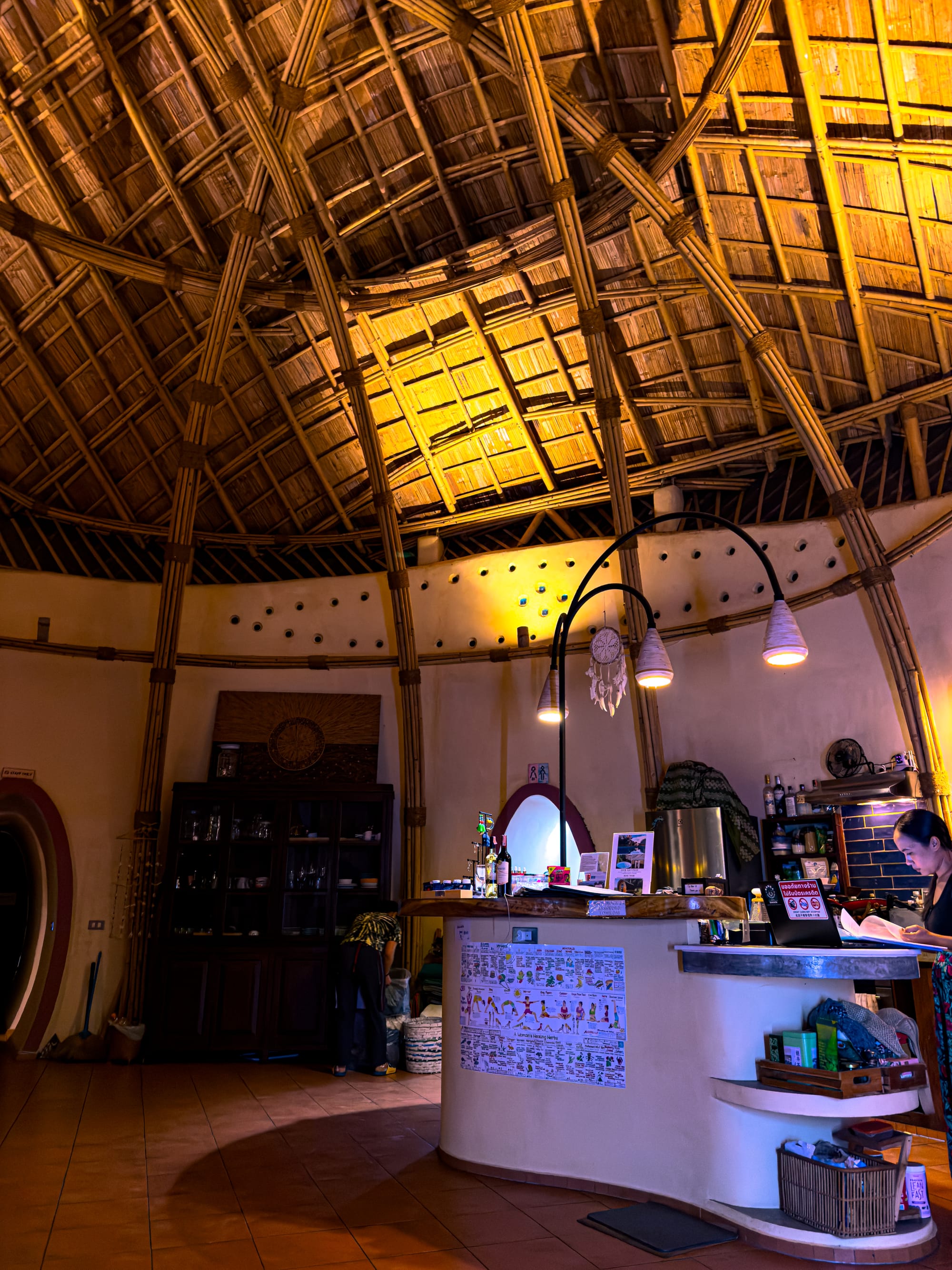
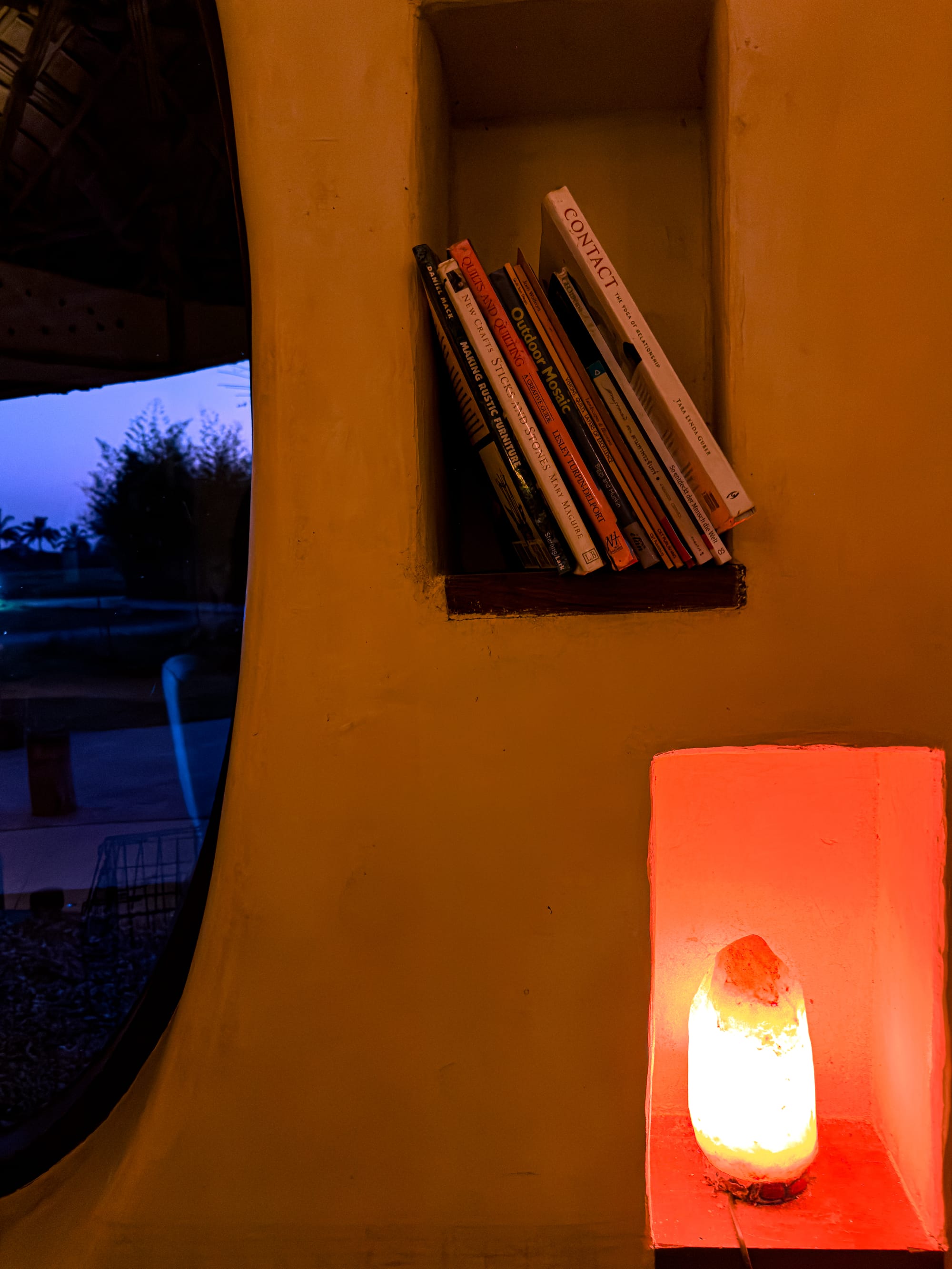
Inside Cocoon’s warmly lit dome
The atmosphere this creates is unlike anything you find in urban wellness centers. Instead of the clinical sterility of tile and steel, Cocoon wraps you in warmth. Light filters in through woven walls, flickers across curved surfaces, and catches on handmade mosaics. Even the smallest details—shelves carved directly into clay walls, niches holding candles, water basins lined with colored glass—invite the eye to rest and wander. There is a softness in these spaces that mirrors the softness the body begins to feel after hours of steam, salt, and fire.
Food, drink, and grounding
A small café sits on the property, offering simple, nourishing food and drinks that align with the overall ethos. Fresh coconuts are cracked open and served as they are, their water cool and slightly sweet. Herbal teas brewed from the same plants that scent the steam room are poured into handmade cups. There are vegan options on the menu. Eating here is not about indulgence but about grounding, a way of extending the rituals of wellness into nourishment.
To sit with a coconut in hand, looking out over the open lawns while steam drifts from the domes, is to understand the coherence of Cocoon. Every element—architecture, ritual, food, and community—threads together into a whole experience.
Friendship among earthen walls
For us, one of the most unforgettable evenings was spent there with friends from our coliving space. We arrived with little expectation and left with the feeling of having been inside something rare and necessary. We moved between heat and cold, floated in saltwater, sat by firelight sipping tea, and laughed with people we had not known an hour before.






